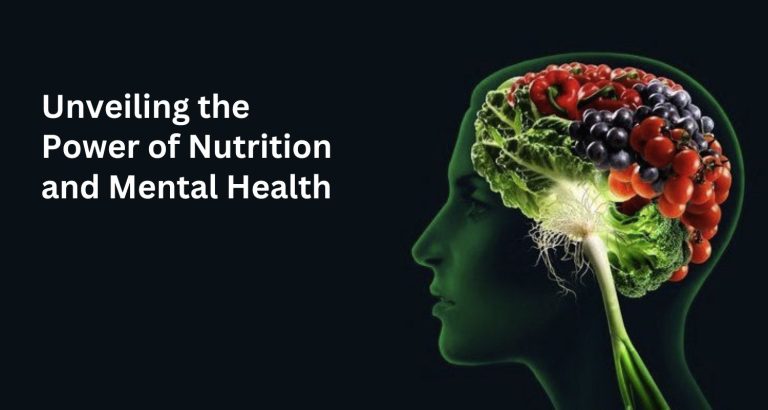The Science Behind Superfoods: Are They Really Super?

When it comes to nutrition and health, the term “superfoods” has been buzzing around for quite some time. You’ve probably heard claims about their remarkable health benefits, but what’s the science behind these dietary superheroes?
In this article, we’ll take a closer look at power foods, delve into their history and facts, explore the scientific evidence behind their supposed superpowers, discuss the current discourse, and separate the myths from the truths. By the end, you’ll have a better understanding of whether power foods live up to the hype.
What is a Superfood?
Superfoods as the name suggests, are foods that are considered exceptionally nutrient-dense and beneficial for your health, as per many online health enthusiasts. These superfoods online are typically rich in vitamins, minerals, antioxidants, and other essential compounds. They have been marketed as a way to boost overall health, prevent diseases, and even aid in weight loss.
Here is a list of power foods that are common in the discourse among health enthusiasts:
- Blueberries: Packed with antioxidants for brain health.
- Kale: Rich in vitamins and minerals for overall well-being.
- Salmon: Omega-3 fatty acids for heart health.
- Quinoa: High protein, ancient grain for balanced nutrition.
- Chia Seeds: Omega-3s and fiber for sustained energy.
- Turmeric: Anti-inflammatory spice with curcumin.
- Spinach: Iron and vitamins for blood and bones.
- Avocado: Healthy fats and potassium for heart health.
- Berries (Strawberries, Raspberries, etc.): Antioxidants and vitamin C for immune support.
- Garlic: Allicin for antibacterial benefits.
- Broccoli: Sulforaphane may protect against cancer.
- Cacao (Dark Chocolate): Antioxidant-rich, mood-enhancing treat.
A Brief History of Superfoods
The concept of superfoods traces its roots back to ancient civilizations that intuitively understood the health benefits of certain foods long before the term “superfood” was coined. In ancient Greece, Hippocrates, the father of modern medicine, extolled the virtues of honey for its healing properties. The Egyptians, known for their advanced medical knowledge, utilized honey as an antiseptic and wound dressing.
Similarly, the Aztecs recognized the nutritional prowess of chia seeds, which they prized as a valuable source of energy and sustenance. Chia seeds were so highly regarded that they were even used as currency in some regions.
Throughout history, various cultures revered specific foods for their healing and nutritional attributes. Chinese medicine, for instance, has a rich tradition of using herbs and foods like ginseng and goji berries to promote well-being.
As scientific research advanced, we began to unravel the mysteries behind these traditional practices. Today, we have a deeper understanding of the bioactive compounds, antioxidants, and essential nutrients that make these foods so beneficial for health. The term “superfood” may be relatively recent, but the wisdom of harnessing the power of nutrient-dense foods has been a part of human civilization for millennia.
The Science Behind Superfoods
To assess the true “super” status of a superfood, a rigorous examination of scientific evidence is paramount. Many power foods garner acclaim due to their impressive levels of bioactive compounds, primarily antioxidants, which combat oxidative stress and inflammation, pivotal factors in chronic diseases.
Consider blueberries, a renowned superfood. These little gems are abundant in antioxidants known as anthocyanins. Scientific studies have established a connection between anthocyanin consumption and enhanced cognitive function. Furthermore, the regular consumption of blueberries has been associated with a reduced risk of heart disease, thanks to their potent antioxidant properties that help protect against vascular damage. [1]
Another superfood, kale, deserves attention. This leafy green powerhouse is a rich source of vitamins A, C, and K, along with essential minerals like calcium and potassium. Scientifically, these nutrients are recognized for their roles in maintaining bone health, bolstering immune function, and contributing to overall well-being. [2]
It’s vital to emphasize that the true efficacy of the best superfoods emerges from their synergistic effects when integrated into a balanced diet. While no single food possesses miraculous properties, the collective impact of a variety of nutrient-rich foods is key to achieving and sustaining better health. Today, to give power to major power foods, the superfood blend powder is promoted as a key solution to improving overall well-being and nutrition.
The Current Discourse: Advantages and Disadvantages
Advantages of Superfoods
- Nutrient Density: Power foods are packed with essential nutrients, making it easier to meet your daily requirements.
- Antioxidant Protection: The high antioxidant content in many power foods helps fight free radicals, potentially reducing the risk of chronic diseases.
- Weight Management: Some powerful foods, like quinoa and lean proteins, can support healthy weight management.
- Heart Health: Power foods like salmon, rich in omega-3 fatty acids, promote heart health.
- Immune Support: Powerful foods like citrus fruits and berries are rich in vitamin C and other antioxidants that boost the immune system, helping the body fight off infections.
Disadvantages of Superfoods
- Exclusivity: Focusing solely on power foods may lead to neglecting other essential food groups.
- Individual Variability: What works for one person may not work for another, as everyone’s nutritional needs are different.
- Allergies and Sensitivities: Power foods, like any other foods, can trigger allergies or sensitivities in some individuals. For example, nuts and seeds, common superfoods used in superfood protein powders, can pose allergenic risks.
- Overconsumption: In the pursuit of health benefits, there’s a risk of overconsumption, which may lead to imbalances or excessive intake of certain nutrients, potentially causing adverse effects.
Myths vs. Reality: Separating Fact from Fiction
Myth 1: Superfoods Alone Can Cure Diseases
Reality: While they offer health benefits, power foods cannot replace medical treatment for serious conditions.
Myth 2: You Must Eat Superfoods Daily
Reality: A balanced diet with a variety of foods is more important than daily superfood consumption.
Myth 3: Superfoods Guarantee Weight Loss
Reality: Weight management is multifactorial; power foods are just one piece of the puzzle.
Myth 4: Superfoods Are a Substitute for Exercise
Reality: While superfood provides essential nutrients, they cannot replace the numerous benefits of regular physical activity. Exercise plays a crucial role in maintaining overall health and weight management.
Myth 5: Superfoods Are a Quick Fix for Health Issues
Reality: Power foods are part of a long-term, holistic approach to health. They can contribute to well-being, but they won’t provide instant solutions to health problems. Sustainable lifestyle changes are key.
Myth 6: All Superfoods Are Equal
Reality: Not all power foods are created equal. The term “superfood” is broad, and the nutritional content can vary widely. Some may be more beneficial for specific health goals or conditions than others, so it’s important to choose wisely based on your individual needs.
Conclusion
In the world of nutrition, there are no magical foods that can guarantee perfect health or solve all your dietary woes. The best superfoods are undeniably packed with essential nutrients and health benefits, but they are most effective when part of a well-rounded diet. It’s important to approach the concept of a superfood with a balanced perspective, understanding that it can be a valuable addition to your superfood diet but not a cure-all.
Remember, the real “superpower” lies in making consistent, healthy food choices, staying active, and maintaining a balanced lifestyle. So, enjoy your kale smoothies and blueberry bowls, but don’t forget to embrace the diversity of the entire food kingdom for long-lasting health and vitality.
References
- Vauzour, D., Rendeiro, C., D’Amato, A., Waffo-Téguo, P., Richard, T., Mérillon, J. M., Pontifex, M. G., Connell, E., Müller, M., Butler, L. T., Williams, C. M., & Spencer, J. P. E. (2021). Anthocyanins Promote Learning through Modulation of Synaptic Plasticity Related Proteins in an Animal Model of Ageing. Antioxidants (Basel, Switzerland), 10(8), 1235. https://doi.org/10.3390/antiox10081235
- Nemzer B, Al-Taher F, Abshiru N. Extraction and Natural Bioactive Molecules Characterization in Spinach, Kale and Purslane: A Comparative Study. Molecules. 2021; 26(9):2515. https://doi.org/10.3390/molecules26092515






